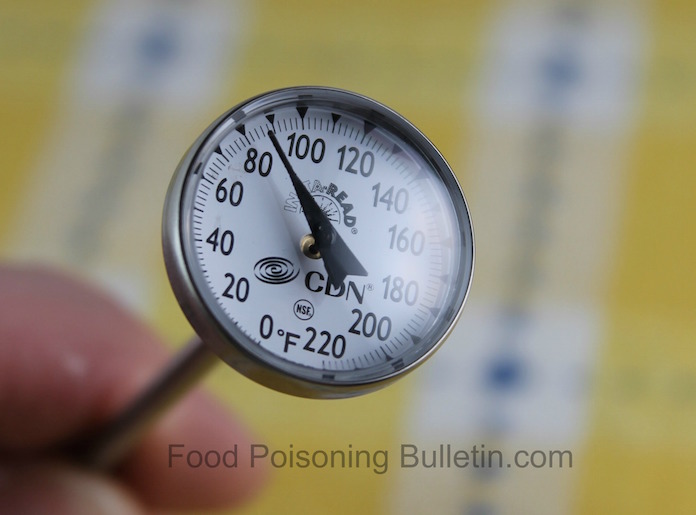Food Poisoning Bulletin has been telling consumers for years about safe food handling to help prevent serious foodborne illness. Unfortunately, many raw meats and produce for sale in this country are contaminated with enough bacteria to make someone sick, so the consumers is the last defense against illness. How you handle and cook these foods is critical to your family’s health. But do you know the safe minimum temperatures for these foods?

First of all, every household should have a reliable and accurate food thermometer. And the cook or cooks in the family should know how to use one. The thermometer should be inserted into the thickest part of the food for the most accurate reading. That means it should be inserted thorough the side of a hamburger, and into the thickest part, away from bone, fat, and gristle, in large cuts of meat. Put the probe in the thickest area of a meatloaf or a casserole.
A thermometer should also be calibrated regularly according to manufacturer’s instructions. You can do this yourself by using boiling water to confirm that the thermometer registers 212°F. And clean your thermometer after each use by washing the probe in hot soapy water, then drying with a clean paper towel.
These are the safe final internal temperatures for potentially dangerous foods:
- Ground beef, pork, veal, and lamb: 160°F
- Ground turkey and chicken: 165°F
- Steaks, roasts, and chops with 3 minute rest time: 145°F
- Fresh pork with 3 minute rest time: 145°F
- Reheated ham: 165°F
- Fish with fins: 145°F
- Shrimp, lobster, crab, scallops: until flesh is opaque
- Clams, oysters, mussels: until shells open during cooking
- Eggs: cooked until the yolk and white are firm
- Egg dishes: 160°F
- Leftovers: 165°F
If you follow basic food safety rules and cook foods to a safe minimum temperature, you will have a good chance of preventing food poisoning. And remember to refrigerate these perishable foods within two hours of cooking, wash your hands well with soap and water before starting to work in the kitchen, and avoid cross-contamination.




